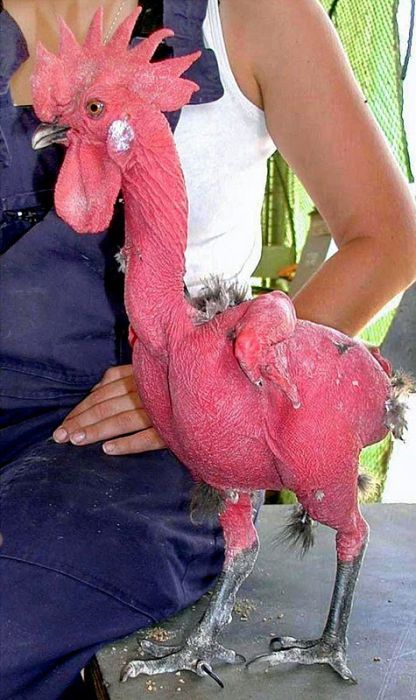|
|
Featherless Chicken
|
In 249 BC, the Roman general Publius Claudius Pulcher had his chickens thrown overboard when they refused to feed before the battle of Drepana, saying "If they won't eat, perhaps they will drink." He promptly lost the battle against the Carthaginians and 93 Roman ships were sunk. Back in Rome, he was tried for impiety and heavily fined.
In 161 BC, a law was passed in Rome that forbade the consumption of fattened chickens. It was renewed a number of times, but does not seem to have been successful. Fattening chickens with bread soaked in milk was thought to give especially delicious results. The Roman gourmet Apicius offers 17 recipes for chicken, mainly boiled chicken with a sauce. All parts of the animal are used: the recipes include the stomach, liver, testicles and even the pygostyle (the fatty "tail" of the chicken where the tail feathers attach).
The Roman author Columella gives advice on chicken breeding in his eighth book of his treatise on agriculture. He identifies Tanagrian, Rhodic, Chalkidic and Median (commonly misidentified as Melian) breeds, which have an impressive appearance, a quarrelsome nature and were used for cockfighting by the Greeks. For farming, native (Roman) chickens are to be preferred, or a cross between native hens and Greek cocks. Dwarf chickens are nice to watch because of their size but have no other advantages.
Per Columella, the ideal flock consists of 200 birds, which can be supervised by one person if someone is watching for stray animals. White chickens should be avoided as they are not very fertile and are easily caught by eagles or goshawks. One cock should be kept for five hens. In the case of Rhodian and Median cocks that are very heavy and therefore not much inclined to sex, only three hens are kept per cock. The hens of heavy fowls are not much inclined to brood; therefore their eggs are best hatched by normal hens. A hen can hatch no more than 15-23 eggs, depending on the time of year, and supervise no more than 30 hatchlings. Eggs that are long and pointed give more male, rounded eggs mainly female hatchlings.
|
|









